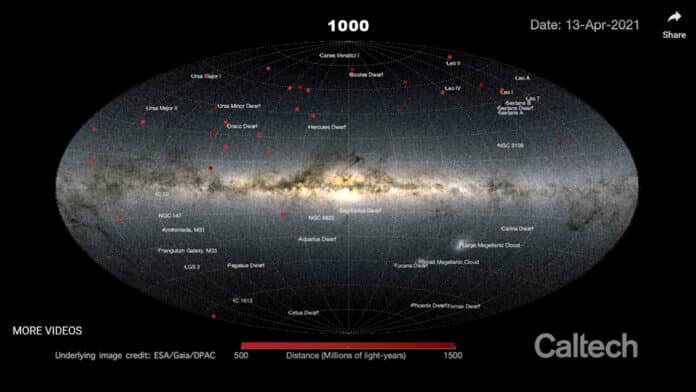Many current and exciting scientific questions that astronomers are trying to answer require them to collect large samples of different cosmic events. As a result, modern astronomical observatories have become relentless data-generating machines that throw thousands of alerts and images at astronomers every night.
Using a machine learning algorithm, astronomers from the Zwicky Transient Facility collaboration at Caltech successfully classified 1000 supernovae autonomously. The algorithm was applied to data captured by the Zwicky Transient Facility, or ZTF, a sky survey instrument based at Caltech’s Palomar Observatory.
Every night, ZTF analyses the night sky for alterations known as transient events. This covers everything, from asteroids in motion to recently devoured stars by black holes to exploding stars called supernovae. ZTF notifies astronomers worldwide of these transient phenomena by sending hundreds of thousands of signals each night.
Astronomers then use other telescopes to follow up and investigate the nature of the changing objects. So far, ZTF data have led to the discovery of thousands of supernovae.
Matthew Graham, project scientist for ZTF and a research professor of astronomy at Caltech, said, “The traditional notion of an astronomer sitting at the observatory and sieving through telescope images carries a lot of romanticism but is drifting away from reality.”
Using machine learning algorithms, astronomers developed SNIascore to classify candidate supernovae. SNIascore can classify what is known as Type Ia supernovae, or the “standard candles” in the sky. These dying stars go bang with a thermonuclear explosion of consistent strength.
Scientists are now working on extending the algorithm’s capabilities to classify other types of supernovae in the near future.
Christoffer Fremling, a staff astronomer at Caltech and the mastermind behind the new algorithm, dubbed SNIascore, said, “We needed a helping hand, and we knew that once we trained our computers to do the job, they would take a big load off our backs. SNIascore classified its first supernova in April 2021, and a year and a half later, we are hitting a nice milestone of 1,000 supernovae.”
“SNIascore is remarkably accurate. After 1,000 supernovae, we have seen how the algorithm performs in the real world. We have found no misclassified events since launching back in April 2021, and we are planning to implement the same algorithm with other observing facilities.”
Ashish Mahabal, who leads machine learning activities for ZTF and serves as the lead computational and data scientist at Caltech’s Center for Data-Driven Discovery, adds, “This work demonstrates well how machine learning applications are coming of age in near real-time astronomy.”
Ashish Mahabal, a computational scientist at Caltech’s Center for Data-Driven Discovery who leads machine learning activities for ZTF, said, “SNIascore sits on top of other underlying machine learning algorithms and layers that we have developed for ZTF, and it demonstrates well how machine learning applications are coming of age in near real-time astronomy.”
